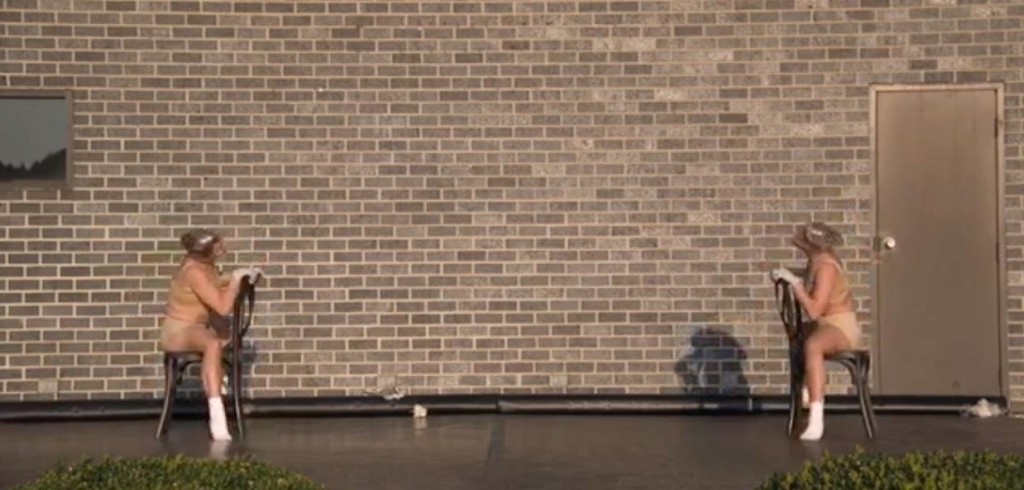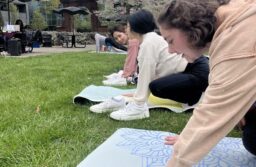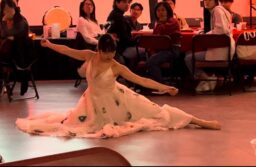
Photo by Matthew Wikfors
On Saturday Sept. 26, Ramapo’s Berrie Center presented the second part of its “Leaning Into The Unknown” series via a YouTube premiere at 8 p.m. According to the event’s description, it was “a glimpse into how artists create new work drawing on world events around them.”
The evening consisted of three work-in-progress performances from New Jersey-based performing artists. All three performances were responses to COVID-19 and the various emotions and experiences that come with it.
The first piece of the night was “Jubilee and Knell” performed by female-centric dance company, The Moving Architects. According to choreographer Erin Carlise Norton, the name of the performance and its inspiration comes from the emotions of jubilee and knell (sorrow) that poet Emily Dickinson described in one of her letters. The performance explored exaggerated realities of the pandemic, like social distancing, isolation and intimacy. The performers danced inside and outside of giant inflatable bubbles with many moments of extreme force on the bubbles to represent conflicting ideas like resistance and resilience.
“The piece represents how joy and sorrow can exist at the same time,” Norton said. “There are moments when we feel isolated and trapped and then there are moments where we experience something that brightens our day.”
She also said that the idea of the bubbles were originally for a different project, but they kept popping up when the pandemic happened and she decided to use the bubbles to visualize the emotions we may feel in quarantine.
The second performance was a series of poems recited by spoken word poet Dimitri Reyes. His poems were gripping and heavy, navigating the unexpected during COVID-19, including supermarket trips, dressing up and getting ready to video chat, heavy reliance on Amazon, an empowering series of acronyms using the letters in COVID and the experience of masks while connecting it to racial profiling. Some of the poems were based on true stories Reyes experienced during COVID-19.
“I wanted to mention it was still happening,” Reyes said about his poems. “COVID is still a problem and some people seem to forget that.”
Reyes also said that his poems captured “what it is to experience joy and life and what it is like with your loved ones around you” during the pandemic.
The final performance of the evening was “De-Eschatology” by sisters Charly and Eriel Santagado of Mignolo Dance. The piece was a physical manifestation of claustrophobic conditions created by COVID-19 and the yearning to break free from them. The performance was partly synchronous and started out with both girls being completely wrapped in plastic. As the performance went on, they slowly cut off the plastic from their bodies until they were completely liberated. The next part of the performance featured the sisters making contact with each other's skin, ending in an awkward handshake that represents the fear people have towards physical contact in quarantine.
According to the sisters, the name of the piece comes from the word “eschatology,” which is commonly referred to as “the end of the world”. The “de-” part, according to them, represents a return to normalcy along with the anxiety and everyday fear that comes with it. What is most interesting is how the piece came to be.
“When we started this piece, we had to be quarantined separately,” Charly said. “We self-quarantined for two months and decided to start a project we could work on while being separated.”
After the event, there was a live Q&A session hosted by Berrie Center director Lisa Campbell where students could ask the artists questions about their performances via YouTube premiere chat. The Q&A session can be viewed on the Berrie Center YouTube channel.
mwikfors@ramapo.edu





